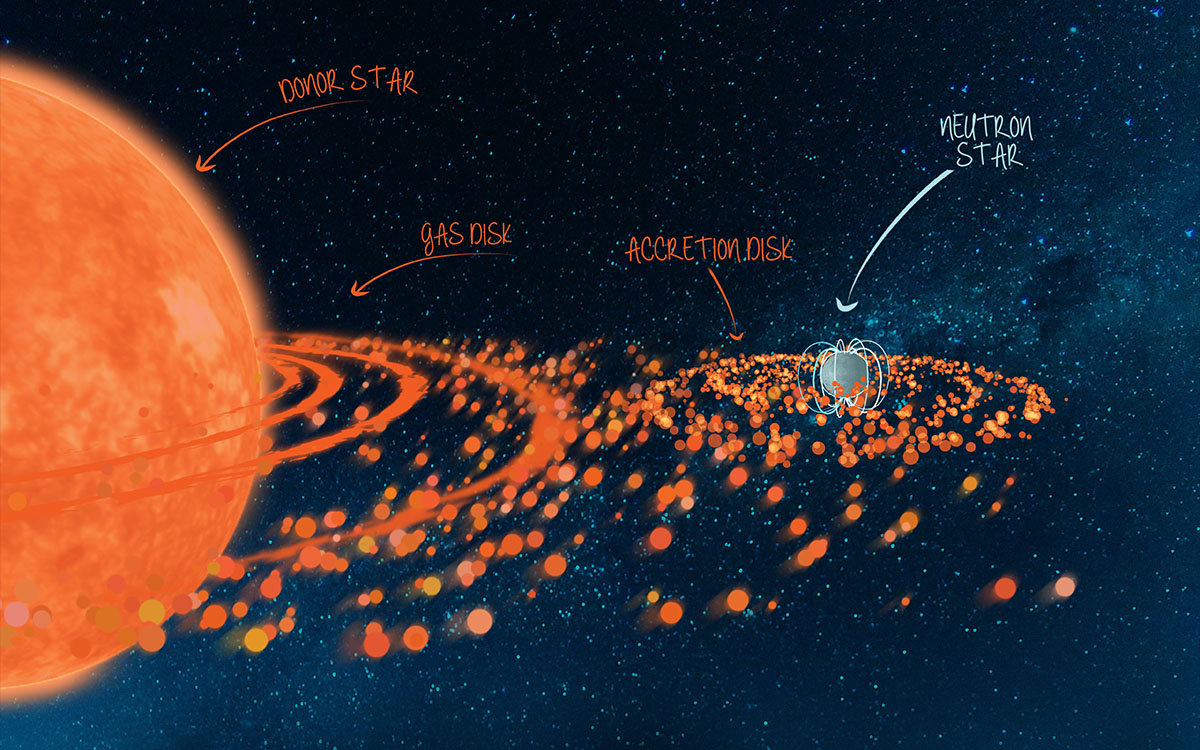when stars become cannibalistic parasites

By now you probably know the lifecycle of a typical star. Born in vast nurseries of gas and dust called nebulae by the thousands they drift apart to burn until they run out of fuel, with massive ones exploding and collapsing into exotic objects like neutron stars and black holes, while the lighters ones slowly fade into white dwarfs before cooling into giant diamonds. Given enough time and distance from other stars, many will form solar systems from the leftovers of the gas and dust from which they were born through a process oddly similar to giving birth before even being able to walk. All this accurately describes the life cycles of so many stars that the names for their number would fail to meaningfully register in a human mind.
But for quite a few stars, life takes very strange, destructive turns which often involve a nearby sibling with boundary issues. In some solar systems with multiple suns, one of the stars cools off as a white dwarf, then siphons the energy from the younger, larger partner, triggering a huge blast known as a Type Ia supernova, ejecting the partner star outwards while providing a rather useful tool to estimate distances across the universe since the explosions all involve very similar masses and energies. In others, stars merge into bigger, brighter objects astronomers call “blue stragglers” in an act of mutual cannibalism. In others yet, neutron stars and black holes eat their companion suns like ravenous zombies.
Still, this is not as strange as things may get in nature. Hypothesized Thorne-Zytkow Objects involve neutron stars starting to feed on giant red suns, getting pulled into them and sinking down to the core, then trying to devour these red giants from the inside out like parasitic wasp larvae. Wait, how would that work without destroying both objects, you might ask, aren’t stars huge? Well, here’s how. It’s true that red giants are big. If you plopped one down in the middle of our solar system, it could devour Earth and turn worlds frozen in miles of ice today into new havens for life. Neutron stars, on the other hand, are the size of small cities, limiting how much they can consume and how fast they do it.
This is similar to what would happen if doomsday predictions about the Large Hadron Collider came true and a microscopic black hole was created during an experiment. It would take a few billion years to ingest enough of the planet to meaningfully register on instruments, much less destroy Earth. However, neutron stars are a lot more efficient and stars are a lot less dense so they will affect elements created by the stars they’re parasitizing and trigger the generation of more metals such as molybdenum and rubidium. Of course, all of this was just mathematical modeling until 2014 when a team of astronomers noticed the predicted anomalies in the light spectrum coming from a star poetically named NV 2112.
Now, there’s been some controversy about NV 2112 but another star labeled HV 11417 seems to fit the bill even better, although the observations don’t match perfectly with the model. At the same time, the hypothesis is almost half a century old at this point and the math may be in need of an adjustment. If these stars really are TZOs, they’ll maintain this stability for about 100,000 years after which, well, we’re not entirely sure what happens. The end result might be a more massive neutron star, a supernova that leaves behind a black hole, or the creation of a typical planetary nebula. Buy hey, that’s the fun part of science: to predict something amazing, find it, then see what happens next.
See: Beasor, E., et al. (2018) A critical re-evaluation of the Thorne–Żytkow object candidate HV 2112, Monthly Notices of the Royal Astronomical Society, Vol. 479, No. 3, DOI: 10.1093/mnras/sty1744





